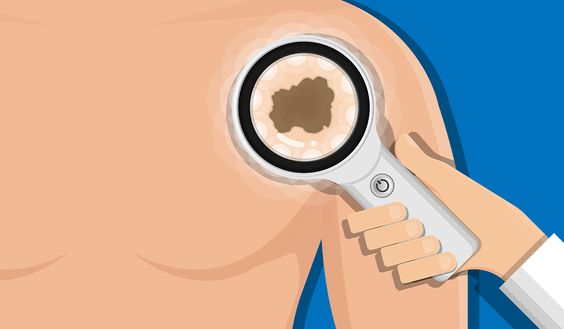Introduction:
Squamous cell carcinoma (SCC) is a common type of skin cancer that develops in the squamous cells, which make up the middle and outer layers of the skin. It often appears as a firm, red nodule or a scaly, crusted lesion. While SCC can occur anywhere on the body, it is most commonly found on sun-exposed areas like the face, ears, neck, lips, and backs of the hands.

SCC is primarily caused by prolonged exposure to ultraviolet (UV) radiation from the sun or tanning beds. Other risk factors include fair skin, a weakened immune system, and exposure to certain chemicals. Early detection and treatment are crucial for SCC, as it can spread to other parts of the body if left untreated.
Symptoms of Squamous Cell Carcinoma:
Recognizing the signs of SCC can lead to early diagnosis and treatment. Common symptoms include:
- A firm, red nodule
- A scaly, crusted lesion that may bleed or ooze
- A sore that doesn't heal or heals and returns
- A raised growth with a central depression
- A wart-like growth
Causes of Squamous Cell Carcinoma:
The primary cause of SCC is prolonged exposure to UV radiation from the sun or tanning beds. Other factors that can increase your risk include:
- Fair skin, freckles, and light hair
- A history of sunburns
- Weakened immune system
- Exposure to certain chemicals, such as arsenic
- Genetic predisposition
Treatment for Squamous Cell Carcinoma:
Treatment for SCC depends on the size, location, and stage of the cancer. Common treatment options include:
- Surgery: Surgically removing the tumor is a common treatment for SCC.
- Radiation therapy: This uses high-energy rays to kill cancer cells.
- Chemotherapy: Chemotherapy drugs can be used to kill cancer cells, either topically or systemically.
- Photodynamic therapy: This treatment uses a combination of light and a photosensitizing agent to destroy cancer cells.
Prevention of Squamous Cell Carcinoma:
Protecting your skin from the sun is the best way to prevent SCC. Here are some tips:
- Wear protective clothing, such as long sleeves, pants, and a wide-brimmed hat.
- Use sunscreen with an SPF of 30 or higher daily, even on cloudy days.
- Avoid tanning beds.
- Check your skin regularly for any changes and see a dermatologist if you notice anything unusual.





